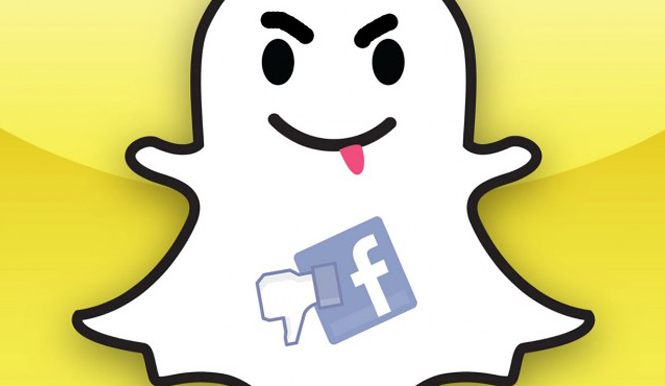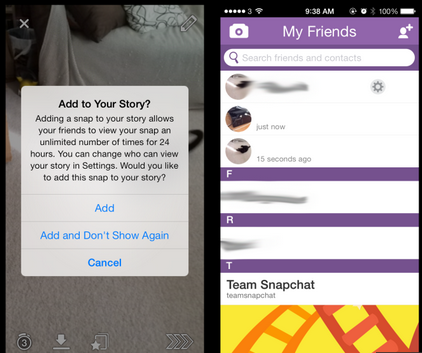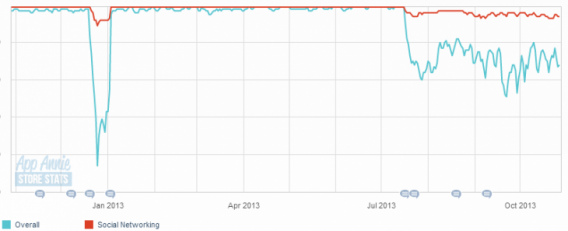Facemash, the Daddy of the Facebook we’ve come to know and (sometimes) love, was born 10 years ago. Today, it’s Snapchat that might dethrone Facebook and could, in turn, threaten the leadership of WhatsApp, which is growing less popular with young people by the day.
Facemash and Snapchat: the search for identity and anonymity
Just like Facemash in 2003, Snapchat is an application that was born from a simple idea that was attractive to young audiences: send photos, videos and drawings that are destroyed within seconds of being seen. When we reviewed Snapchat, we decided that its success is down to its extreme simplicity and “seize the moment” attitude. Snapchat’s instant messaging is immediate, short-lasting and very visual.


Ten years ago, Facemash got off to a similar start. The underlying idea – comparing two students’ pictures and deciding who’s hotter – was very simple, very visual and a bit of a tease. In its first four hours of life, Facemash generated thousands of hits. A year later, the initial idea of a “catalog of faces” took shape in the form of Facebook, a university website that opened up to everyone from 2006. The rest, as they say, is history.

Facemash invited visitors to compare photos of randomly selected students
Beyond the differences in context, there’s another way in which Facemash and Snapchat differ completely. While Facemash was created to link your virtual identity with your actual self, Snapchat was created to break this link. If Facemash put names to photos, Snapchat converts them into messages intended to be temporary memories that cannot be associated to our virtual persona, a fact which is increasingly important (and appealing). With Snapchat, online communication once again becomes free and daring.
Facebook: less banal, more “Twitter” by the day
10 years down the line, Facebook has become a giant with over 1,200 million users. It‘s omnipresent, not to mention increasingly complex. The photos are only a small part of the Facebook experience: now we use it to inform, post news, share knowledge, even do work! Hashtags show that Facebook is aiming to become more mainstream and serious. It’s a one way trip to maturity.

By becoming something that’s as everyday as email, Facebook has normalized, or “Yahooized“. It’s no longer cool among young people, who, overwhelmed by the complexity and seriousness of the famous blue network, have gone elsewhere. So what’s caught their eye? Not other social networks, but mobile applications like Snapchat, where they spend most of their time. While Facebook is a website that has landed on mobile devices, Snapchat is a native app for the mobile era. Everything is done on the phone, and there’s no web version that could jeopardize the reputation or safety of people who exchange photos.

The fastest growing apps are mobile, based on random encounters, sexual tension and, of course, the forbidden. They aren’t small social networks that grow, they’re visual networks. Why? Writing is boring. Stickers, GIF animations and videos like Vine or Instagram (wisely acquired by Facebook) are infinitely better. What we’ve seen in recent years is an exploration of aspects that Facebook has neither the inclination nor the ability to reproduce.
Snapchat is becoming something big
In a move that nobody was surprised by, Facebook has publicly shown an interest in Snapchat. After a round of financing in which Snapchat was valued at an estimated 4,000 billion dollars, Mark Zuckerberg tried to buy Snapchat for the figure of one billion dollars, an offer that was rejected by Evan Spiegel, its CEO. For Facebook to do something like this, they must be pretty scared of Snapchat. The failure of Poke, with which Facebook tried to emulate the success of Snapchat, has made it clear that a lot of people are concerned about the prospect of sharing things through an app that bears the stamp of Facebook. Snapchat’s appeal, on the other hand, is its independence, like 4Chan or Anonymous. Its 350 million photos shared daily have made a new Fotolog. Facebook simply can’t follow this path with its current apps.

But Snapchat is maturing as well. Snapchat Stories, small narratives from photos that last 24 hours, add depth, but are still quick and temporary. Another smart move is SnapKidz, which is Snapchat’s secure mode for users under 13 years of age. It’s a user base that’s beyond the reach of Facebook.
So what’s Facebook’s Plan B? Buy WhatsApp?
WhatsApp dethroned SMS and still maintains a solid lead in Western markets, but its approach is also in the classic Facebook mold. Famous for resisting change, WhatsApp will remain true to its style for a long time, but many have doubts about its ability to continue in the first place, particularly with the existing competition.

WhatsApp is still very popular, but growth has definitely stalled
It would make sense for Facebook and WhatsApp to join forces to face Google on one side and Snapchat on the other. A union of this kind, with or without purchase by Facebook, would consolidate the family of powerful, Facebook-style applications in what would be a “suite” of applications similar to the old trio of mail-chat-blog, but updated to what’s relevant now: social network-messaging-photos. So, is it only a matter of time before Facebook buys WhatsApp and Snapchat takes the lead in this market sector? We’ll have the answers in 2014. It’s going to be an exciting year for social networks. If you want to know more about Snapchat, read our how-to.
You might also like:
The evolution of social photo sharing
Original article by Fabrizio Ferri-Benedetti published on Softonic ES.

